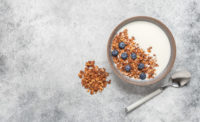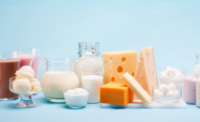In the business world, leading with transparency means honoring one’s commitments even when one is forced to make difficult decisions. Transparency and simplicity in food labels continue driving growth in the dairy industry, particularly as the rise of “clean eating” and nutritional claims like natural, organic, and non-GMO are being sought out by health-conscious consumers.
According to market research firm MarketsandMarkets, the global clean-label ingredients market size is projected to grow from $38.8 billion in 2020 to $64.1 billion by 2026, at a compound annual growth rate (CAGR) of 8.3% during the forecast period.
Ingredient experts surmise that part of that huge jump is attributable to more consumer demand for clean-label products and the health benefits associated with natural and organic ingredients.
Although “clean label” doesn’t have a legal definition and is open to consumer interpretation, as the name suggests “clean label” is just that — clean, explains Ravi Arora, director of sales and marketing for Cambridge, Mass.-based Global Organics.
“This would include products with the fewest ingredients that are simple and understandable, and do not contain ingredients that are perceived to be artificial or highly processed. And increasingly, ‘clean’ is getting linked with ‘green,’” he says.
Arora notes that organic certified dairy products grew well even in a difficult 2022 versus the previous year. “Milk/Cream grew by 6.5%, Yogurt by 12.2%, and Butter/Cottage Cheese/Sour Cream by 3.4%,” he says.
“A study by Innova Market Insights found that 64% of consumers globally said they are increasingly buying products with natural or clean label claims. … The top clean label claims consumers look for are ‘no additives/preservatives,’ ‘natural,’ and ‘organic.’"
— Thom King, president, and CEO of Icon Foods
Familiarity is a big part of clean label, so “ingredients that might be found in a kitchen pantry usually align with consumer clean-label expectations,” says Mark Fahlin, business development manager for dairy at Minneapolis-based Cargill, suggesting that honey and vanilla extract fulfill that need state. Additionally, if the ingredient is grown, such as in the case of beet sugar and cane sugar, consumers perceive that more positively than just plain sugar, Cargill’s proprietary research found.
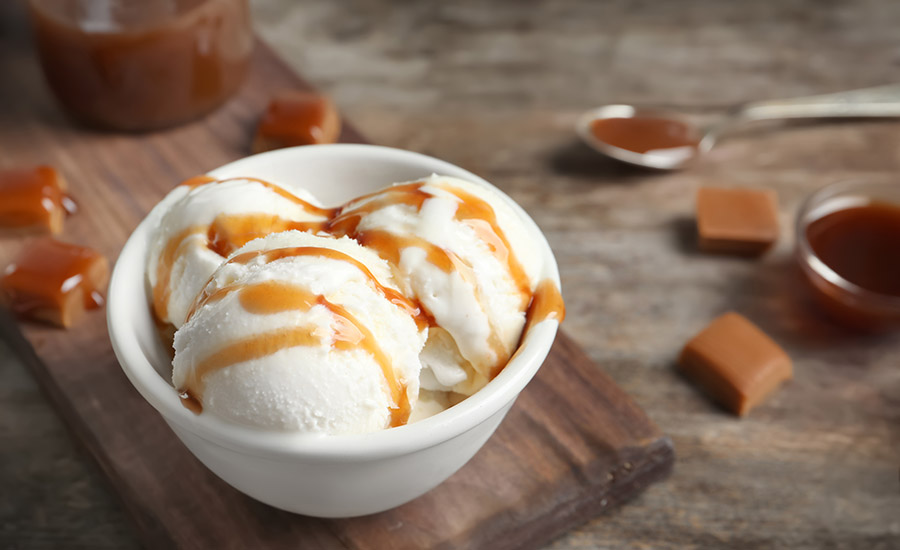
Clean label contains no artificial ingredients, is free from common allergens, such as gluten or dairy, and often emphasizes sustainability and ethical sourcing practices. “The goal of clean label is to provide consumers with more transparent and wholesome food choices,” explains Thom King, president and CEO of Icon Foods, Portland, Ore. “A study by Innova Market Insights found that 64% of consumers globally said they are increasingly buying products with natural or clean label claims, and this trend is particularly strong in Europe and North America. The study also found that the top clean-label claims consumers look for are ‘no additives/preservatives,’ ‘natural,’ and ‘organic.’"
Fortunately for dairy, many of its yogurts, spreads, milks, butter, and beverages already have simple ingredient declarations along with nutritional appeal due to their native protein content, vitamins, and minerals, notes Jennifer Stephens, vice president of marketing for Fiberstar Inc., River Falls, Wis.
“Consumers selecting dairy for nutritional purposes tend to expect clean and simple labels. As a result, stabilizers like starches and gums at times fall suspect especially if it is not a recognizable ingredient,” Stephens says. “Many on-the-go formats are popping up in the dairy category especially for kids. Kid products are typically scrutinized by parents. They expect to see ingredients that make sense on the label.”
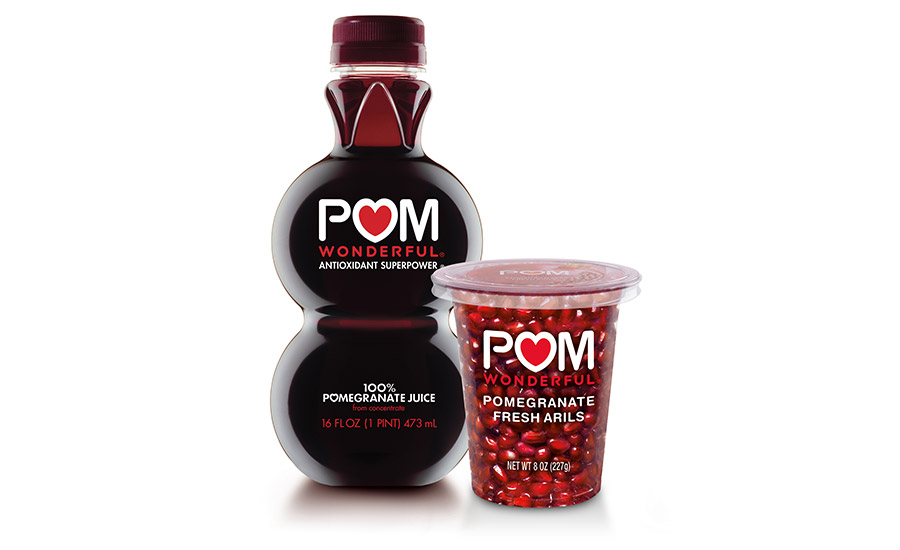
After attending the Clean Label Conference, taking place May 23-24, Tonya Lofgren, product manager for Ciranda, Hudson, Wis., received additional insights applicable to dairy products and packaging. “While consumers used to expect a clean label to mean simple ingredients and ‘free from’ claims, it is evolving to include clean diets, alignment with personal values, and sustainable sourcing,” Lofgren suggests.
The following are ways that dairy brands can apply this evolution on pack:
- Minimalist messaging: conserving resources, keeping people and the planet safe.
- Addressing nutrition quality and density.
- Animal welfare claims are skyrocketing: cage-free, pasture-raised, grass-fed, animal-welfare labeling.
- “Better-for-you/me” is transforming to “better-for-us.” Sustainability is now a requirement, as is a “do no harm” mentality.
- PFAS-free packaging (non-stick), other ways plastic reduction is being considered.
- Sugar reduction.
Not only do clean labels “strongly influence” consumers’ health perceptions, but “clean-label claims are the top product attribute consumers value most in dairy and dairy alternatives,” Lofgren says, citing Innova’s Top Trends 2023 Dairy and Dairy Alternatives report.
“In the light of the ‘real’ food movement, the clean label can also be defined as food products made from authentic, natural ingredients such as fruits, whole grains, and vegetables. These are perceived to offer a better, healthier option and thus, resonate with the clean label ethos,” says Ashley Robertson, director of global marketing for Lenexa, Kansas-based Corbion.
A host of clean-label options
Since today’s savvy consumers are demanding more transparency from the brands they purchase and want to better understand a company’s farm-to-fork philosophy, ingredient suppliers are developing functional, better-for-you ingredients that meet those expectations.
For example, CP Kelco developed GENU Pectin YM-FP-2100, a clean label-friendly way to stabilize fruit yogurt drinks and simplify the process.
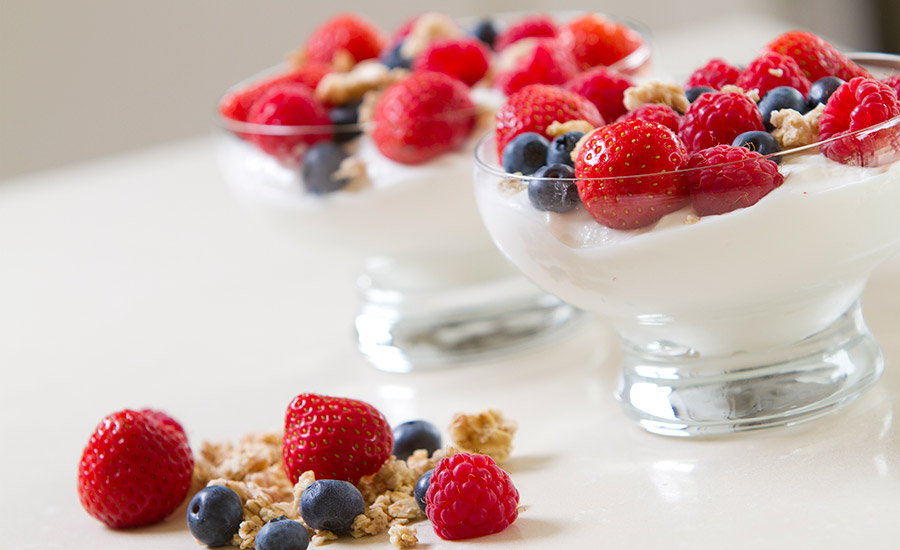
“When added at the fruit prep stage, the functionality carries over to the white mass, so no other stabilizer is required,” notes Marina Boldrini, senior marketing manager, Americas for CP Kelco. “Consumers see one less, but easily recognizable, ingredient on the label. Manufacturers may achieve cost savings by using one less ingredient as well.”
The Atlanta, Ga.-based ingredient supplier also produces NUTRAVA Citrus Fiber, a true food ingredient upcycled from spent citrus peels that can be simply listed as citrus fiber on the label. The ingredient formulates well in cream cheese, yogurt, and yogurt fruit prep.
“It can help maintain suspension, stability, viscosity, mouthfeel enhancement, syneresis control, and water-holding capacity as it contributes to dietary fiber intake,” Boldrini explains. “With a reliable supply ready, NUTRAVA Citrus Fiber can help formulators reduce the use of or act as an alternative to starch, xanthan gum, sugar, oil, locust bean gum, and other ingredients that may be difficult or expensive to source due to supply chain issues, shortages, and inflation.
“This can help product developers shorten and simplify their ingredient lists as well as help with cost without compromising on quality or shelf life — an ideal, clean label-friendly case,” she continues. “We ensure that leftover materials from the manufacturing process are repurposed.”
Also on the stabilizing/texturizing side, Chicago-based ADM introduced Stabrium Hydrocolloid Solutions 100 and 200 as an alternative to gelatin, monoglycerides, and diglycerides, bringing targeted texture to dairy and dairy alternative frozen desserts and yogurts, according to Mike Medina, ADM’s category marketing director for Specialized Nutrition & Dairy.

At the forefront with its Colors from Nature portfolio, ADM offers a “rainbow of stable color solutions” derived from natural sources that can help dairy and alternative dairy brands aiming for clean label targets.
“They deliver striking hues that can withstand different processing conditions and various pH systems, while also remaining stable throughout shelf-life,” Medina explains.
Unveiled in spring 2022, ADM’s PearlEdge gives bright, clean white a place in the color rainbow with diverse applications in dairy and alternative dairy products. Unlike titanium dioxide (TiO2), however, PearlEdge is created using raw materials derived from natural sources, including native corn starch, which supports the quest for products with clean-label positioning.
On top of that, the company leverages its vertically integrated supply chain along with its proprietary and patent-pending technologies to control the quality of these raw materials while eliminating any extra ingredient modification, he notes.
Natural appeal
Companies also are developing functional, clean-label ingredients from plants like stevia, label-friendly starches, and more. For example, Parsippany, N.J.-based Beneo manufactures a range of functional ingredients with health and wellness benefits derived from natural sources like chicory root, sugar beet, rice, and wheat.
Steven Gumeny, North American product manager for rice ingredients and functional proteins, notes that all of Beneo’s ingredients are plant-based, non-GMO, and contribute to better nutrition and health.
Not only are Beneo’s rice ingredients well-known in the dairy and dairy alternative industries, clean-label consumers recognize the ingredients which help create optimal texture and stability, using a familiar food staple.
“Specifically, we offer a line of functionalized native rice starches, which can be labeled simply as ‘rice starch.’ These starches can withstand severe processing conditions like low pH, high shear, or high heat,” Gumeny explains. “Made from waxy rice starch, they provide a soft and creamy mouthfeel and excellent freeze-thaw stability. The amylopectin inside waxy rice is uniquely branched, and helps to resist retrogradation and syneresis, meaning moisture stays where it belongs — inside your product.”

The company also offers clean-label, plant-based prebiotic fibers — Orafti inulin and Oligofructose — which are derived from chicory root using a gentle hot water extraction method, Gumeny reports. In addition to being soluble and pleasant tasting, the prebiotic fibers are scientifically effective in improving digestive health and one’s microbiota composition.
The ingredients also can be easily incorporated into an extensive range of food products such as yogurt, where they help create a creamy texture while reducing fat and sugar on a label.
Fairfield, N.J.-based A&B Ingredients offers a wide range of natural ingredients that can help dairy brands create products that meet clean-label requirements while providing functionality and nutritional benefits.
“We offer solutions for natural shelf-life extension, plant protein and fiber fortification, and sodium and sugar reduction,” says Joe O’Neill, vice president of sales and business development for A&B Ingredients. “Our CytoGUARD line of natural extracts for preservation and shelf-life extension allows dairy formulators to replace synthetic preservatives and antioxidants while maintaining the shelf life and the fresh taste and quality of dairy and non-dairy products. In a market characterized by inflation and decreasing consumer loyalty, offering extended-shelf-life products becomes a distinguishing factor.”
To boost the nutritional quality and mouthfeel of dairy and non-dairy products, the company offers non-GMO, allergen-free, all-natural pea protein and chicory root fiber (inulin), the latter of which provides a healthy solution for sugar reduction in yogurt.
“This dietary fiber can provide the desired sweetness in formulations while reducing sugar and caloric content. It's highly soluble and offers high water-binding capacity, which helps improve texture in products where mouthfeel is important, O’Neill says. “Additionally, its prebiotic effect supports digestive health and boosts the nutritional quality of foods.”
Cutting-edge, low-sugar solutions
Speaking of sugar reduction, ingredient suppliers offer an arsenal of plant-based, clean-label sweetening solutions. And the timing couldn’t be better. According to Cargill’s 2022 proprietary sweetener research, Americans are more likely to check the amount of sugar versus look for a specific sweetener ingredient or claim.
“However, sweetener claims can influence purchases. Those that fared best in our survey typically implied ‘natural’ or ‘no artificial sweeteners,’ including ‘naturally sweetened’ or ‘made with a natural sweetener,’” relays Cargill’s Carla Saunders, senior marketing manager for high-intensity sweeteners. “Organic and non-GMO claims were most impactful with millennials. Across all generations, the simpler ‘Non-GMO’ claim scored higher than ‘Non-GMO Project Verified,’ though both claims delivered positive net purchase impact scores.”
According to Saunders, the company fields the most requests around sweeteners, as brands aim to keep artificial ingredients like Ace-K, sucralose, and aspartame off ingredient statements. Yet, zero-calorie sweeteners like stevia are on the rise.
“Dramatic improvements to next-generation stevia products, combined with consumers’ greater familiarity with the ingredient, have opened the door to a new wave of label-friendly, reduced-sugar beverage formulations,” Saunders explains.
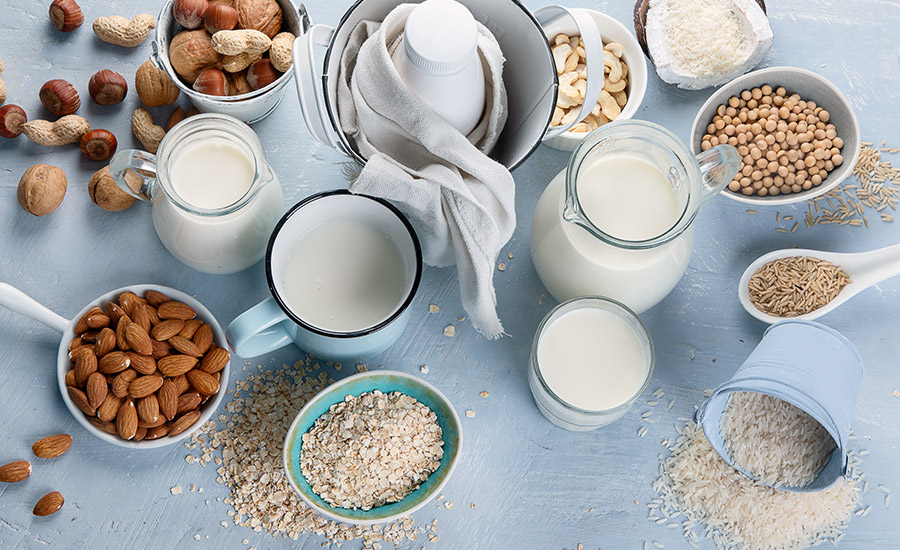
Among the products Cargill offers is its ViaTech stevia leaf extract portfolio, which delivers up to 70% sugar reduction in a wide range of applications; EverSweet, produced through fermentation, enables the company to access the best-tasting parts of the stevia leaf, Reb M and Reb D, creating a cost-efficient, great-tasting sweetener with up to 100% sugar reduction in many beverage applications; and the newest application, EverSweet + ClearFlo, represents another breakthrough in stevia technology, delivering enhanced flavor modification characteristics, faster dissolution, improved solubility, and greater stability in formulations. It also supports simple label declarations, Saunders adds.
A food ingredient manufacturer, Icon Foods, offers the low-calorie monk fruit extract that has a glycemic index of zero; stevia extract in Reb A and Reb M, a natural sweetener derived from the leaves of the Stevia rebaudiana plant, that also is low calorie with a zero glycemic index; erythritol: sugar alcohol that is naturally found in fruits and fermented foods; allulose, a rare sugar found in small quantities in fruits like figs and raisins; and tapioca fiber, a soluble dietary fiber derived from tapioca starch that can be used as a bulking agent to improve the texture of food.
“Additionally, Icon Foods provides sweetening systems in a variety of particle sizes for every application,” King states. “We have a line of no-added sugar inclusions, flavor bits, chocolate chips in dark and white. All are designed to eliminate added sugars.”
As the name of the company suggests, the ingredients manufactured by Global Organics are all certified organic. “We offer a full line of sweeteners (cane sugar, coconut sugar, agave, rice, and tapioca syrups), chocolate and cocoa, fruit specialties (purees, juices, and IQF), instant coffee and caramel that can all be used in dairy products,” Arora states.
With a strong focus on sustainability, including sustainable supply and Fair Trade practices, Ciranda manufactures plant-based ingredients derived from tapioca, rice, coconut, agave, palmfruit, and cacao from around the world. Additionally, it produces gluten-free flours and starches; syrups and sweeteners; cocoas and chocolates; coconut products; liquid and powdered lecithins; and vegetable oils, Lofgren says.
On the horizon
Ingredient suppliers agree that there is a significant push to create a more sustainable future, with food processing, transportation, and packaging under the spotlight. There also will be continued scrutiny on how ingredients are grown, processed, and used in the food, dairy, and beverage industries.
“Currently, consumers are unaware what goes into creating food products and how this impacts the environment. In the future, rating systems may come into play especially with food packaging,” Fiberstar’s Stephens says. “These rating systems or certifications may be part of the labeling landscape. In addition to the ingredient statement, the product’s label will create more transparency about the environmental impact that would be part of its clean label story.
“…The industry as a whole needs to understand that systems evolve to be more efficient. It is human nature to progress,” she continues. “Because of this, there are many opportunities for the dairy industry to revamp their category whether by rethinking dairy production such as adopting an animal-free system, creating dairy products from sustainable ingredients and/or implementing environmentally sound packaging.”
Consumers will continue to look for authentic, wholesome ingredients that they consider “clean label” and “closer to nature,” ADM’s Medina says. “This can include ingredients that may also offer nutritional value, such as plant proteins like soy and pea, as well as wholesome ingredients like beans, pulses, nuts, seeds, and ancient grains,” he states. “…On the horizon, we anticipate greater inclusion of chia seeds in ice creams and puddings, as well as bean powders in yogurts, shakes, and more.”
Corbion’s Robertson affirms that future innovations in clean-label dairy products will likely involve improved transparency and traceability, with sourcing, production methods, and quality at the forefront.
She concludes, “Hence, for ingredient suppliers, the challenge and opportunity lie in understanding these diverse interpretations and delivering ingredients that help producers meet the evolving clean-label demands without compromising on taste, texture, or color — the quintessential attributes cherished by consumers.”


